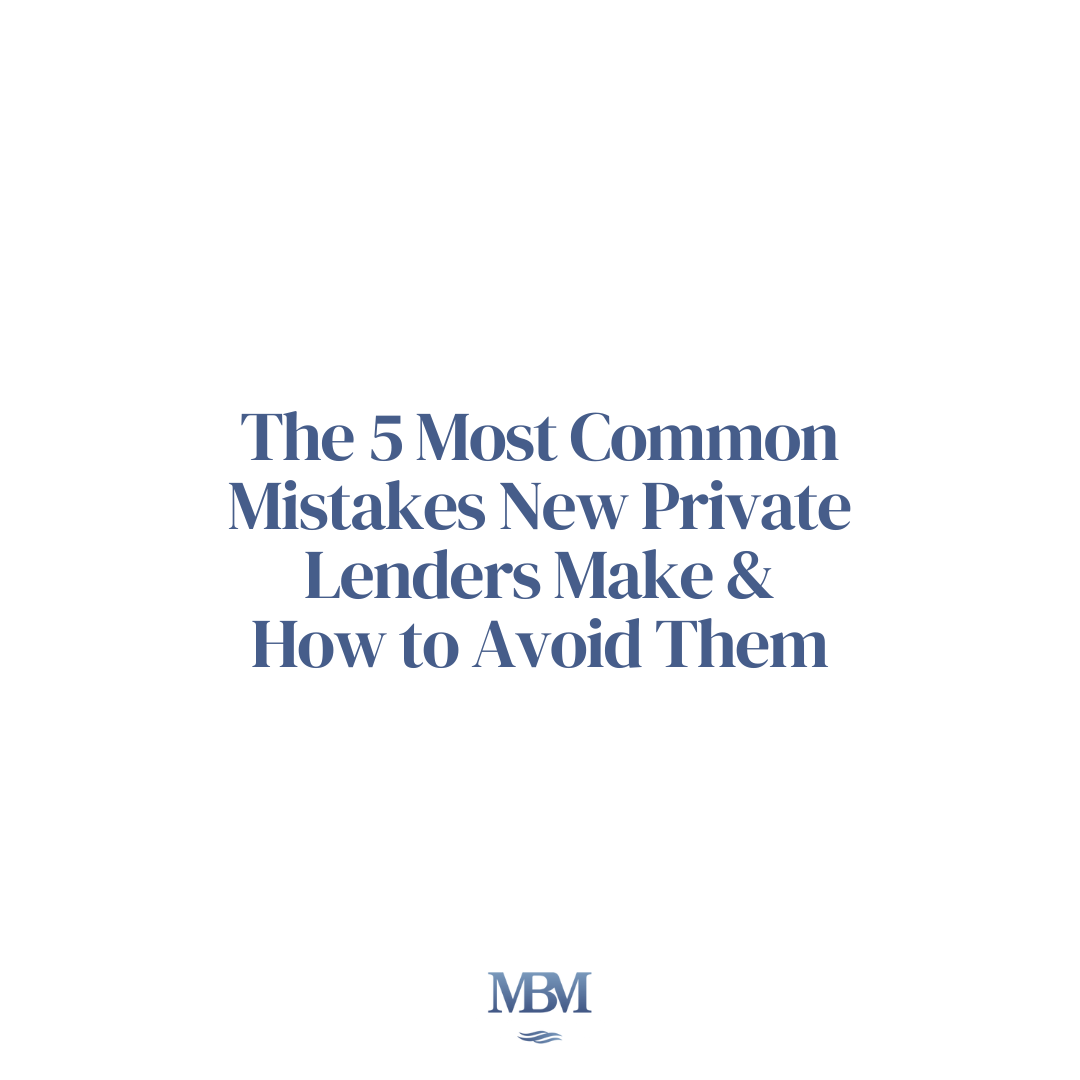Private lending can be one of the most profitable, secure, and scalable ways to grow wealth. But if you’re new to the game, it’s also easy to make mistakes—some of them costly.
Most beginner lenders don’t lose money because the deal was bad—they lose because the structure, vetting, or mindset was off.
How to Reinvest Private Lending Returns for Exponential Wealth Growth
This post breaks down the five biggest mistakes new private lenders make—and shows you exactly how to avoid each one. If you want to lend like a pro, this is your shortcut.
Mistake #1: Lending Based on Emotion, Not Underwriting
A borrower sounds nice. The deal feels good. The story checks out.
That’s how people lose money.
Smart lending isn’t about trust—it’s about math.
If you’re not running the numbers coldly and clearly, you’re speculating.
What to Do Instead:
- Always verify the borrower’s exit strategy.
- Calculate Loan-to-Value (LTV) and stay conservative.
- Know the ARV, not just the purchase price.
- Underwrite the borrower and the property.
Bottom line: Good vibes don’t protect your capital—due diligence does.
Mistake #2: Lending Without Solid Legal Documents
Many new lenders do handshake deals, loan money via Zelle, or copy some boilerplate contract they found online.
If something goes wrong, they have no legal recourse.
What to Do Instead:
Every deal should be protected with:
- Promissory Note – formal IOU that details the loan amount, rate, term.
- Mortgage or Deed of Trust – recorded with the county to secure your lien position.
- Personal Guarantee (if applicable) – makes the borrower personally liable.
- Insurance Policy – with you listed as the loss payee.
And yes, you need a real attorney to draft or review these.
Mistake #3: Ignoring the LTV
LTV—Loan to Value—is one of the most critical safety levers you control.
A lot of new lenders don’t even ask for an ARV (After Repair Value), or worse—they lend at 80–90% LTV because “the borrower needed it.”
If a deal goes bad at that level, you’re exposed.
What to Do Instead:
Use this simple rule:
Max LTV = 65% of ARV
If the ARV is $300,000, your max loan should be no more than $195,000.
That leaves you room to foreclose and still recover your capital, even with resale costs.
Pro Tip: Require an independent BPO (Broker Price Opinion) to verify the ARV.
Mistake #4: Trusting the Borrower Without a Track Record
It’s tempting to lend to a new flipper who seems hungry or a friend who “just needs some help.” But hope is not due diligence.
What to Do Instead:
- Ask for past deals—proof of performance.
- Request references (contractors, title companies, other lenders).
- Look at how they handled past projects—timeline, outcome, issues.
- If they’re new, structure the deal tighter: lower LTV, shorter term, escrowed rehab funds.
Private lending is a business. Treat it like one.
Mistake #5: Letting Capital Sit Between Deals
You do one loan. It gets repaid. You sit on the funds for 3–4 months waiting for “the next good one.”
That lag kills your compounding.
What to Do Instead:
- Build deal flow ahead of time (referrals, networking, platforms).
- Reinvest quickly—don’t let money sit idle.
- Use short-term loans to keep your capital moving (6–12 months max).
- Have 2–3 deals ready before the current one ends.
The fastest-growing lenders aren’t the ones chasing the highest return. They’re the ones who keep their capital in motion.
Bonus Mistake: Doing Everything Manually
Tracking payments in a spreadsheet. Sending reminder texts manually. Forgetting due dates.
It all works—until it doesn’t.
What to Do Instead:
- Use a CRM or simple tracking system.
- Automate follow-ups and payment tracking.
- Set up a rinse-and-repeat structure.
You want to scale like a lender, not grind like a loan manager.
Conclusion
Private lending isn’t hard. But it’s not forgiving either.
Get sloppy with structure, skip the math, or trust the wrong person—and the consequences are real.
But when you build a system, follow clear rules, and treat lending like a business? You gain control, consistent returns, and freedom most investors never touch.
Want to avoid these mistakes and start lending with clarity and confidence?
The MicroBanking Method gives you everything you need to source, structure, and scale private lending deals safely.
Because wealth is built by the lender—not the landlord.




